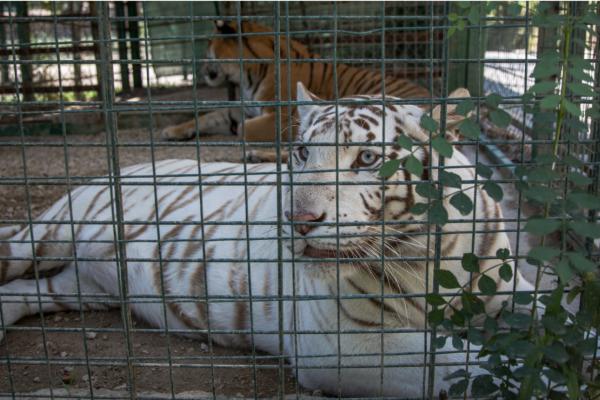Humans have a choice - either they hunt down and kill all bears, or they must co-exist with the large mammals.
Bears are protected by EU law, but each country operates its own policy of hunting, saving, feeding or eating the animals. A bear could face death or survival depending on whether it lives in Estonia or Latvia, Norway or Sweden. In Italy, a bear that kills a man is the subject of an expensive trial that captivates a nation. In neighbouring Slovenia, such a bear could be shot, chopped up, boiled in a stew and sold in a restaurant.
In the documentary, data and feature project Bears Uncovered, an international team of journalists has travelled to five countries in Europe (Romania, Italy, Slovenia, Albania and Kosovo) to discover the status of wild bears and bears in captivity, and researched the 26 countries in Europe where bears are active.
This is what the journalists have uncovered:
🐻 The relationship between people and bears has turned to chaos in many countries. Bears are caged in private homes and outside restaurants in Slovenia, Albania and Romania.
🐻 In Kosovo, bear fat is available to buy on the black market as an ointment and food.
🐻 In Romania, local and increasingly foreign tourists feed wild bears on the street, and force them to pose for selfies. Both activities are illegal.
🐻 Bear numbers are on the rise in southern Europe and stable in most of north Europe (with a total rise of around 9.3 percent in Europe). Reasons for this include more food availability, an enlarging wilderness, humans abandoning parts of the countryside as they move to the cities, and possibly climate change.
🐻 In many countries, female bears with cubs are coming closer to urban areas, because settlements protect them from alpha males, who plan to kill the cubs, so the female can mate again. Experts argue towns can act as a “shelter” for female bears fleeing abuse.
🐻 Six countries in Europe allow bear hunting to reduce or manage numbers. But this does not always work as a method of population control. In three countries where bear hunts are sold to foreigners: Russia, Estonia and Slovenia, there continues to be a rise in bear numbers.
🐻 We examine the alternatives to a bear cull, such as bear-proofing the countryside, using special dogs to protect livestock, creating natural feeding zones, or using sanctuaries for problem bears.
Bear Uncovered is produced and researched by Ovidiu Dunel-Stancu (Romania), Michael Bird (UK), Vjosa Cerkini (Kosovo) and Stefano Petrelli (Italy), with design by Andrei Cotrut, data visualisation by Razvan Zamfira and editing and post-production by Cristian Gagea.
Image by Ovidiu Stancu







